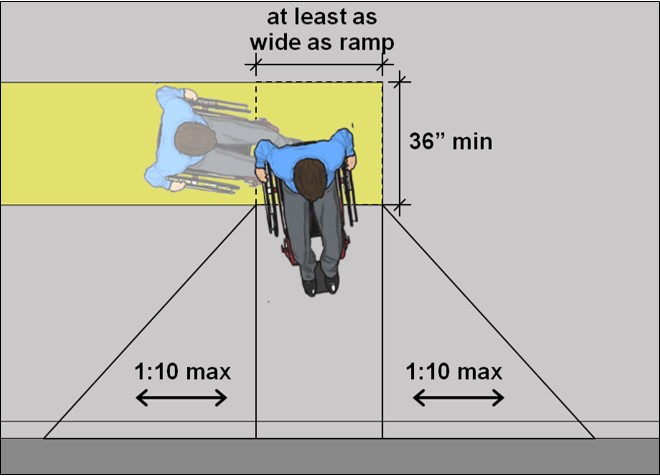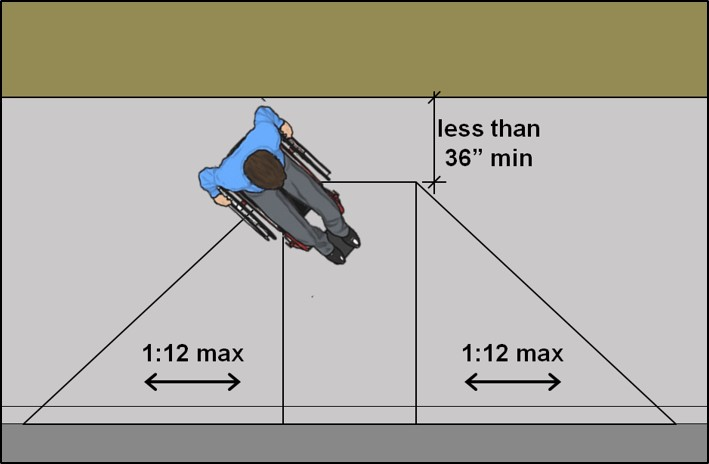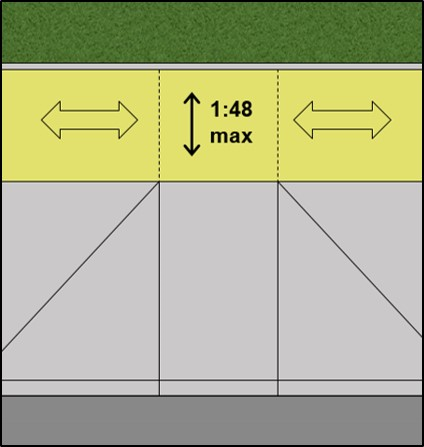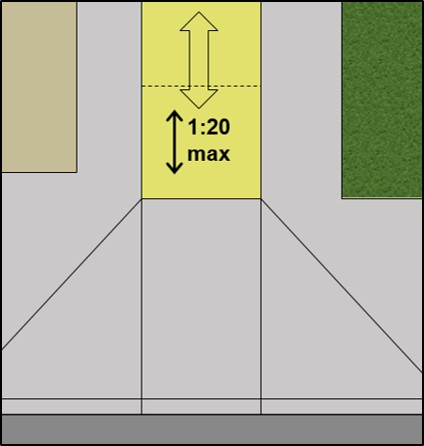Top Landing [§406.4]
The required landing at the top of curb ramps allows an accessible route to connect to the ramp opening. Side flares, where provided, are intended primarily to prevent tripping hazards, not to accommodate wheelchair maneuvering at ramps (except in alterations where sufficient landing space is unavailable). Side flare slopes cannot exceed 1:10 max. (or 1:12 max. in alterations where a top landing is unavailable).
Alterations: Ramp without Top Landing
In alterations where sufficient landing space is not available, side flares must be provided and cannot slope more than 1:12 to facilitate wheelchair maneuvering. Parallel curb ramps (page 12) provide an alternative in such conditions.
Top Landing Slope
The maximum slope of the top landing is determined by the configuration of connecting accessible routes.
Perpendicular Accessible Route Parallel Accessible Route
The cross slope of perpendicular connecting routes limit the slope of the ramp top landing to 1:48 (measured parallel to the running slope).
If the only connecting accessible route runs parallel to the ramp run, the top landing can slope 1:20 max.





User Comments/Questions
Add Comment/Question